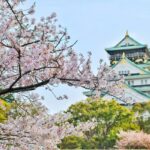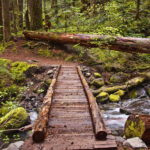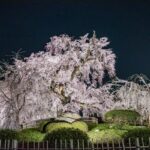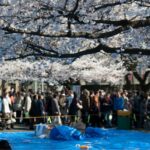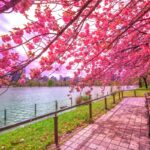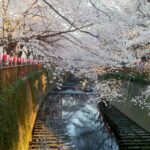Japan is a truly beautiful country, with so many incredible sights to see and activities to experience. If you’re someone who appreciates the natural splendor of the outdoors, you’ll have no trouble making lifelong memories—whether it’s hiking one of the famed heritage trails or gazing upon the breathtaking cherry blossoms while they’re in bloom.
If you’re staying in Tokyo, one of the most striking local destinations is well-positioned in the background: Mt. Fuji. It’s Japan’s most well-known natural landmark and one of the most beautiful peaks in the world. Every year, tens of thousands of people flock to the country to spend time on Mt. Fuji—whether to summit it or simply explore the trails that wind around it.
If you’re in the mood for an adventure, and you want to experience some of the most incredible views you’ll ever witness, climbing Mt. Fuji is an experience you’ll never forget. Tourists can climb Mt. Fuji—and while the climb isn’t a difficult one, it’s a long one.
Here’s what tourists need to know about climbing Mt. Fuji, so you can make the most of your experience.
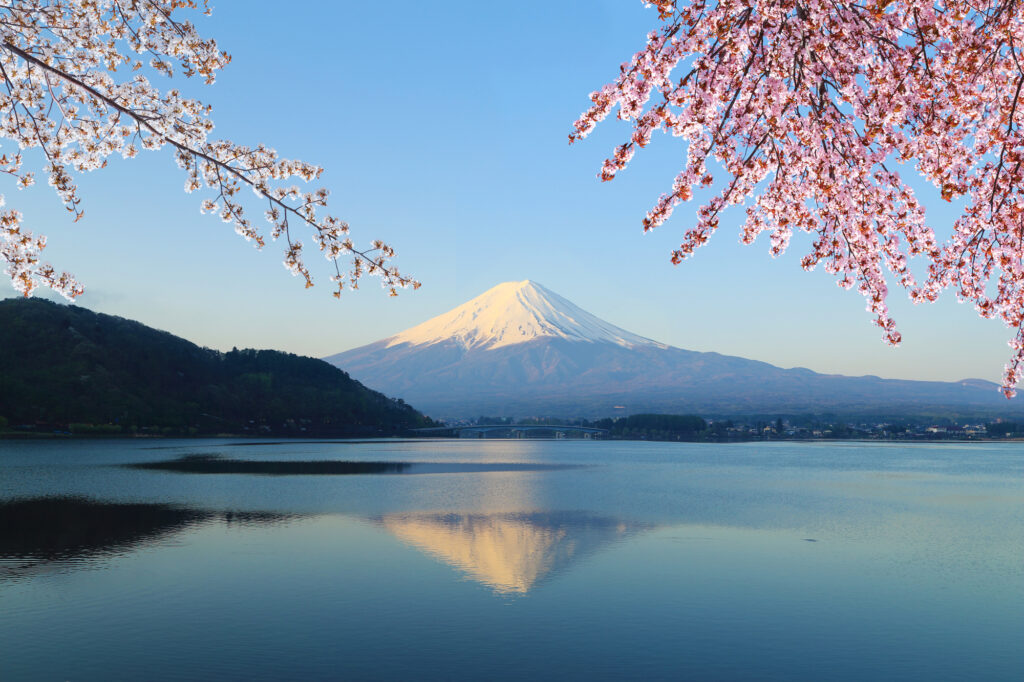
Before you decide to saddle up and climb Mt. Fuji, you should know a little more about the imposing mountain and its significance to the Japanese people. Here are some fast facts about this mighty peak worth knowing before you begin your trek:
- The mountain is 12,389 feet (3,776 meters); enough for 35th tallest peak in the world!
- The base of Mt. Fuji is 62 miles (100 kilometers) west of Tokyo and easily accessible.
- The average time to summit Mt. Fuji is between 5-7 hours, depending on the trail.
- Mt. Fuji is actually a stratovolcano: three individual volcanos with a single dome.
- Mt. Fuji is one of Japan’s three sacred mountains, alongside Mt. Haku and Mt. Tateyama.
- The volcano is still considered “active,” however the last known eruption was in 1707.
These exciting facts aside, it’s important to realize that in Japan, Mt. Fuji is an iconic symbol of strength, nature and heritage. Not only is it a symbol used frequently for inspiration in Japanese culture, the mountain itself is highly regarded. Those who live on and near the mountain take great care to keep the area well-maintained and to help educate tourists and travelers on how to treat their trek to the top with dignity.
The best times to climb Mt. Fuji
The best time of year to climb Mt. Fuji is during its official climbing season: from early July to mid-September. This is the warm season in Japan, and the mountain is usually snow-free and the weather is generally mild. Mountain huts are also operating this time of year, so you have the option to rest during your climb—whether for a few hours or overnight—if you need to.
While you can climb Mt. Fuji at any time during the year, note that conditions begin to deteriorate outside of the warm season. Tourists aren’t advised to try and summit the mountain during the winter months, and it’s generally recommended that you wait until the first major thaw of the spring before attempting the climb. That said, seasoned hikers and boulderers won’t find too much of a challenge on Mt. Fuji.
Time of day is also important when climbing Mt. Fuji, and most climbers try to time their ascent so they can see the sunrise from the summit. Climbers often start their journey to reach the 7th or 8th station at the end of the day, stay overnight, then continue to the summit early on day two. Sunrise takes place as early as 4:30-5:00am in the summer, so plan to get up early if you want to witness the incredible view of sunrise from Fujisan, the mountain’s peak.
Planning and packing: what gear do you need?
You’ll need to bring plenty of supplies on your trek. Pack a flashlight, water and food, especially if you’re climbing a trail with only a few mountain huts along the way. Keep in mind that prices increase with altitude, so try to pack what you’ll need before you arrive at the mountain. It’s also helpful to bring a hiking stick. If you forgot yours, you can purchase one at a 5th Station to make your climb easier.
When it comes to hiking gear, remember that you’re attempting to summit a mountain! Dress for an uphill journey by wearing comfortable footwear with exceptional traction—hiking boots or trail shoes are highly recommended. In addition, you’ll want thick socks to keep your feet comfortable and warm, not to mention to stave off blisters. While you might be tempted to wear shorts and a t-shirt because it’s the summer season, remember that the temperature drops with altitude and you’ll soon become cold if you don’t dress in layers. It’s better to be able to put clothes on for warmth than not have them at all!
Finally, sunglasses, sunscreen and a hat are recommended. While many of the trails up to the summit offer plenty of shade, you’re going to spend hours at a time traversing these trails. Protect your skin and keep yourself safe from direct sunlight whenever possible. It goes without saying that additional clothing, gear and accessories can be easily transported up the mountain in a lightweight backpack. Don’t forget an emergency raincoat for passing showers!
The four hiking trails of Mt. Fuji
Mount Fuji is a massive volcano, and the prefectural governments of Yamanashi and Shizuoka have divided the mountain into 10 stations. You’ll find the first station at the foot of the mountain and the tenth at the summit. The fifth station is composed of four different sections on different sides of the mountain.
The number of stations you’ll encounter on your way up the mountain depends on the trail you choose to take and where that trail starts. Before you start hiking, decide where you want to begin your ascent on one of the mountain’s four trails:
- Yoshida Trail. Lying in Yamanashi Prefecture, the Yoshida Trail begins at Fuji Subaru Line 5th Station. This is the most popular trail on Mount Fuji, and it’s also the most accessible one if you’re coming from Tokyo. It’s accessible almost year-round, and you can plan to spend up to 7 hours ascending to the summit and up to five hours in descent. This picturesque trail is lined with mountain huts and features incredible beauty.
- Fujinomiya Trail. Fujinomiya Trail begins at Fujinomiya 5th Station in Shizuoka Prefecture. It’s the closest 5th station to the summit, making this trail the fastest way to get to the summit (4-7 hours). You’ll spot nearly half-a-dozen traditional huts along the trail. This is the only route that’s not split into separate ascending and descending trails, so prepare for some congestion on busier days during climbing season.
- Subashiri Trail. In Shizuoka Prefecture, the Subashiri Trail starts at Subashiri 5th Station, located just 2000 meters above sea level. It’s the second-easiest trail to access by public transportation from Tokyo, with buses serving the station daily during climbing season (July-September). It takes up to 8 hours to reach the summit when taking the Subashiri Trail. It also meets up with the Yoshida Trail at the 8th station, giving you the option to switch things up and take an alternate route to the summit.
- Gotemba Trail. Shizuoka Prefecture’s Gotemba 5th Station lies at the start of Fujinomiya Trail. Gotemba is the lowest 5th station, making this the longest trail—expect to spend up to 10 hours hiking to the summit. This trail is the most featureless of the four, with terrain made up of fields of lava rock and only a few mountain huts to be found near the 7th and 8th stations.
When deciding between trails, take into account several factors. How experienced are you when it comes to hiking or climbing? How long do you think it will take you to summit? Do you plan to stay overnight or are you trying to summit and return in a single day? These questions can help you choose a trail that makes your experience climbing Mt. Fuji the best it can be.
All about station huts
More likely than not, you’re going to need a rest when trying to summit Mt. Fuji. Thankfully, there are rest huts located at every station up the mountain. Travelers can stop inside and rest for a small fee before getting back on the trail and heading up to the summit. It’s recommended that you stop at these huts to acclimate your body as you ascend the mountain.
If you’re planning to hike to the summit in two days, you’ll need to reserve an overnight stay in one of the station huts. This will ensure you have a bed for the evening, where you can rest and recuperate before starting out early again the next day. If you don’t reserve a hut ahead of time you won’t be able to stay overnight! Most huts cost JPY 5,000-8,000 for an overnight stay and an additional JPY 1,000 for a meal, which is a small price to pay for a little mountain hospitality.
Camping is NOT permitted on Mt. Fuji! Because it is a UNESCO World Heritage Site, overnight camping is expressly forbidden, which makes station huts your only option for overnight stays. If you forget to book a space, you’ll likely find yourself paying for a space on the floor—or hiking through the darkness, which isn’t recommended.
Climbing Mt. Fuji with a guide
Want to climb Mt. Fuji don’t aren’t completely confident in your ability to get to the top by yourself? Don’t worry: guided hikes to the summit are available—and very popular. The cost of these guided climbs can vary depending on the year, how many people are in the group and how quickly you want to summit—or even what time of day you want to arrive at the peak.
Most guided climbs start in Tokyo, where the guide will meet with the group and make sure everyone is appropriately dressed and packed for the journey ahead. Then, you’ll take a bus to the starting point and begin the ascent as a group. Most guided climbs will also include the expense of booking an overnight station hut, as well as the cost of bathroom usage while on the mountain (toilet tip). Consider it an all-expenses paid trip to the summit—all you need to do is get there!
What to do if you need help on Mt. Fuji
Despite being a tourist attraction that draws tens of thousands of climbers each year, things can still go wrong on the scent to Mt. Fuji’s peak. Whether you need first-aid, are ill or are experiencing issues that prohibit you from going further, make sure you know what to do if you need assistance on the mountain.
- If you are near a designated station, seek help from those operating the station. They will be able to provide immediate support while calling for help if needed.
- There are periodic patrol officers from different prefectures traversing the various mountain paths. You can easily identify these individuals by their uniforms, which feature colored armbands. They can radio down the mountain for help in serious cases.
- Always stay on the designated trails! Never leave the trail for any reason. Mt. Fuji’s trails are well-traveled throughout the year, and it’s likely someone will be along shortly.
As mentioned, Mt. Fuji isn’t a particularly difficult mountain to summit—nor is it particularly dangerous. That said, accidents can happen at any time. It’s best to be fully aware of your surroundings, comply with all signage and rules, and be mindful of the weather as you climb.
Tips for summiting Mt. Fuji
Ascending the summit of Mt. Fuji (Fujisan)—no matter which trail you take—isn’t too challenging for the average person. While there are few points where the terrain is steep and rocky, you don’t need advanced climbing skills to conquer Fujisan with ease. Keep in mind, though, that the climb is long, regardless of the trail you choose, and the air gets thinner as you get closer to the summit.
That said, there are some ways to make the trek easier on yourself, and the people you’re with. Here’s how to make the most of your climb on Mt. Fuji:
- Huts are very crowded during peak seasons, so plan accordingly and make reservations. Some huts allow climbers to rest inside for around 1,000-2,000 Yen per hour. You’ll also find paid toilets, food, water and other climbing provisions.
- Wear clothing appropriate for cool temperatures and strong winds and be sure to bring rain gear and gloves. Wear hiking shoes that protect your ankles, since you may encounter some rocky, steep terrain.
- Mind your manners when climbing Mount Fuji. Treat the volcano with respect, and don’t pick any plants or take any stones or other materials. Never camp on the mountain—use designated mountain huts when you need a rest.
- Educate yourself on altitude sickness and hike at a pace that allows you to acclimate as you get further up the mountain. Staying overnight is a great way to rest your body and get it acclimated to thinner oxygen, so you don’t get light-headed on your climb.
- It’s a smart idea to bring your own foodstuffs and try to pack nutrient-dense foods. While you can buy food on the mountain, you might find yourself waiting while it’s prepared or that you’re not a fan of the limited options.
- 5am is widely considered the busiest time to summit the mountain on any given day, because most people will be gearing up for sunrise. We aware of this as you begin your journey to the summit in the early morning hours.
- Your credit card is no good on Mt. Fuji! Always bring cash—particularly small bills and coins—to pay for anything you want to buy or to cover the expense of a rest stop or toilet break. A few thousand yen should be enough to get you there and back.
- Be courteous to others while climbing the mountain. Ask if you can pass people who may be traveling slower than you, and always try to move to the side to let people pass if you need to slow down. A little courtesy goes a long way.
Climbing Mt. Fuji is an amazing experience, made all the better when you follow these tips for a safe, courteous, mindful hike to the summit.
Enjoy your ascent to Japan’s most popular peak
Mt. Fuji is an internationally recognized landmark, and making your way to the summit is an achievement you’ll treasure for a lifetime. There’s nothing like seeing the sun rise over Tokyo and the rest of the Shizuoka Prefecture. And while the hike to Fujisan can feel like the endeavor of a lifetime, it’s made worthwhile by the breathtaking views, mindful contemplation and deep sense of peace that many hikers report after descending from the top.
If you’re enchanted with the idea of climbing Mt. Fuji, why wait? Start planning your trip to Japan—and Mt. Fuji—and get ready for a rewarding experience like no other once you reach the summit.
- How Much Money Can You Make Teaching English in Japan? - December 12, 2022
- The Best Places to Teach English in Japan - December 9, 2022
- The Best Credentials for Teaching English in Japan - December 8, 2022



